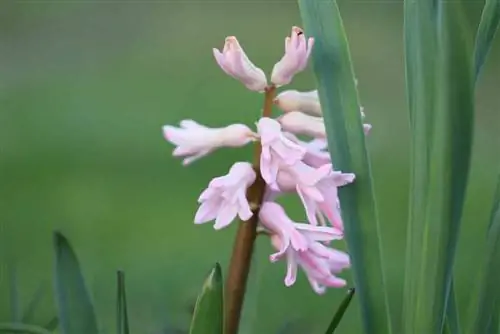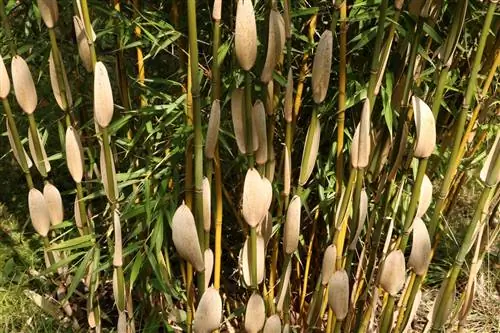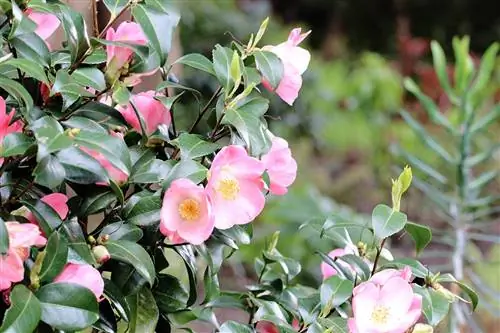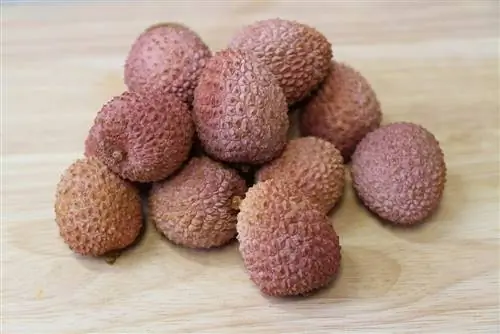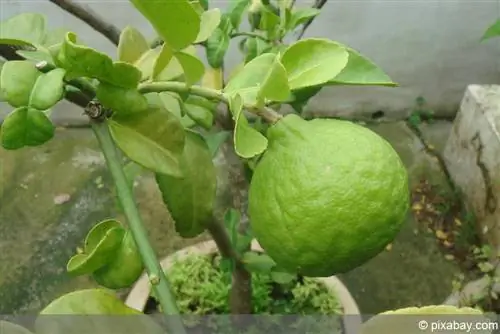- Author admin [email protected].
- Public 2023-12-17 03:39.
- Last modified 2025-06-01 06:48.
Hyacinths bloom in different colors and are available in blue, white, red, pink or yellow. The colorful plants offer a wonderful sight in the garden as well as in a flower pot or as a cut flower in a vase.
The bulbs from which the magnificent plants ultimately grow are not particularly demanding and do not require any special care. The onions should be fertilized in the fall. Many people fall into the misconception that the green leaves of the plant need to be cut. However, this is incorrect because plants need the leaves to utilize nutrients. However, if the leaves turn green, you can safely make a cut and remove the leaves.
Overwintering hyacinths effortlessly - instructions
Hyacinths are hardy. All you need is well-drained soil. Of course, it would be ideal if the soil was a little sandier.
- First, gradually reduce the moisture intake.
- Simply dig up the bulbs after flowering and let them dry.
- Then place the bulbs in flower pots or in so-called hyacinth jars. These have the advantage that the plants sprout more quickly in spring.
- Overwintering hyacinths in a glass
- To do this, fill a glass with boiled water and put the onion in it.
- The water should be about 1 cm below the onion. So you should use a container where the onion sticks out a bit and is not directly in the jar.
- Remove any loose skin from the onion before placing it in the jar.
- Now cover the glass with a paper cap.
- The ideal location is to choose a dark and slightly cooler room.
- Now the onion will gradually sprout roots that reach to the bottom of the container.
- Make sure that there is always enough water in the glass - the onion should never stand in water!
- Strong roots have formed after about three months. Then you can remove the paper bag and place the hyacinth in a window to bloom.
The hyacinths belong to the lily family and are striking due to their unique flower shapes. That's why they are one of the most popular plants in the garden. However, they can also be easily kept in a plant pot or on the windowsill in the house. A hyacinth can delight people in the colors blue, red, white, yellow or even pink. It is also suitable as a cut flower, although it is often planted in flower pots. The hyacinth bulb is actually quite undemanding to keep. However, it should be properly fertilized in autumn if the hobby gardener wants to overwinter it, which is always worthwhile with a hyacinth. As soon as the plant has finished flowering, the amount of watering water should be reduced. A room that is as dark as possible should be chosen for overwintering. A hyacinth that has been planted in the garden does not require any overwintering aids, as the hyacinths are hardy. All that is important is a permeable, slightly sandy soil.
Overwintering hyacinths in a glass
The glass should be clean and filled with boiled water. The onion is then placed in the jar. The hyacinth bulb should stick out a little and also have a little space in the jar. It is advisable to remove all loose parts of the peel before putting it in the glass. A paper cover is placed on the glass. The future storage space for the hyacinths must be cool and dark. In this environment, the bulb will grow more roots that can reach to the bottom of the jar. The hobby gardener can check the water level at regular intervals and, if necessary, refill it with boiled water. However, the onion must not be completely submerged in water, otherwise it will rot. The hyacinth develops strong roots within three months. The paper can then be removed and the plant placed on the windowsill to bloom.
Hyacinths need to rest in a cool place
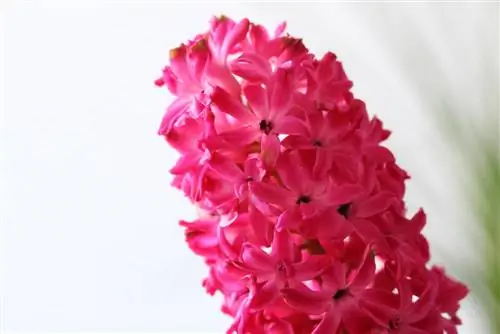
The actual flowering time of the hyacinth is between May and March. If you buy new onions, you should definitely pay attention to the size of the onions. Because with a hyacinth, if the bulb is big, the flower will also be big. They are available in sizes from 15 to 19 centimeters in circumference. However, very large grapes often need to be supported. The ideal planting time for hyacinths is in autumn, although the bulbs require very nutrient-rich soil, preferably compost-based. They should also never touch each other when planting. The smaller bulbs are more suitable for growing in a group in a planter, while the larger bulbs look good in a hyacinth jar. Under no circumstances should the hyacinths planted in a soil culture be placed entirely in the soil; around half of the bulb should protrude from the soil. The potting soil must be moist, but not wet, otherwise mold or pest infestation will occur. As long as the onion stays dry and is not covered too high with wet soil, pests of all kinds are unlikely. However, the hobby gardener should intervene and dispose of them if they see that the onion is becoming soft or has damaged areas.
Summary
- Hyacinths are hardy and can remain in the garden
- you can also overwinter in a glass or planter
- reduce your fluid intake in the fall
- Put dried onions in a glass with boiled water
- Plant onions only halfway in nutrient-rich soil
- as soon as the onion has rooted in the glass, it can no longer stand in water
- the storage room must be cool and dark
- the rest period is around three months
- check the water level in the glass regularly
- cloudy water must be replaced and missing water must be replaced
- let it sprout on the windowsill
A hyacinth is ideal for growing in unusual containers such as pretty glasses. You really don't need a green thumb for wintering. Nevertheless, certain factors must be in place so that the hyacinth bulb survives the winter months unscathed. It depends a bit on personal taste whether you like several smaller plants or one plant with a large, magnificent flower.

